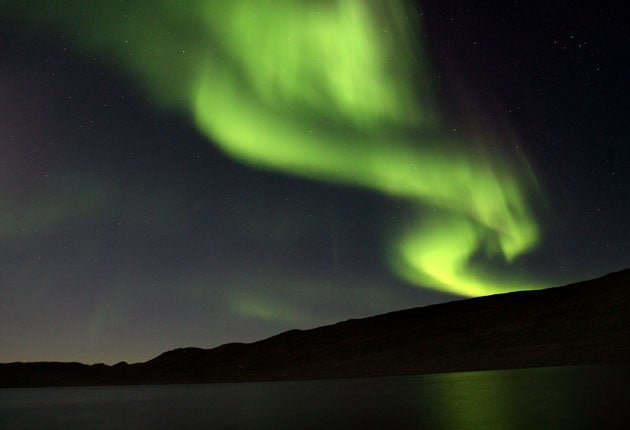Nature turns on the Christmas lights

To the ancient Norse they were the flashes of light reflected from the burnished shields of the Valkyries, while for the Scots they represent "the mirrie dancers" of the night. The spectacle of the Northern Lights, or aurora borealis, has inspired myth and folklore but the scientific reality behind these stupendous light displays is as fascinating as the fiction.
The auroras normally fall like shimmering curtains suspended over the horizon of the night sky. They are usually seen as vivid greens, but they can also appear as reds, purples or violet blues. They are generated at an altitude of between 60 and 620 miles by a complex interaction between the Earth's magnetic field and vast pulses of electronically charged particles streaming to Earth from the Sun. This "solar wind" is captured by the magnetic field of the Earth and is channelled into the field's lines of force running in and out of the north and south poles. As the solar wind flows through the magnetic field, it collides with gases in the upper atmosphere. These collisions excite molecules of gas, causing them toemit energy in the form of light. Different gases give off different hues.
Recently, scientists found that the Earth and the Sun are connected by giant magnetic "ropes" made from twisted magnetic fields that act as invisible superhighways for the solar wind to travel along. It is these structures that ultimately provide the energy that lights up the northern sky.
Subscribe to Independent Premium to bookmark this article
Want to bookmark your favourite articles and stories to read or reference later? Start your Independent Premium subscription today.

Join our commenting forum
Join thought-provoking conversations, follow other Independent readers and see their replies